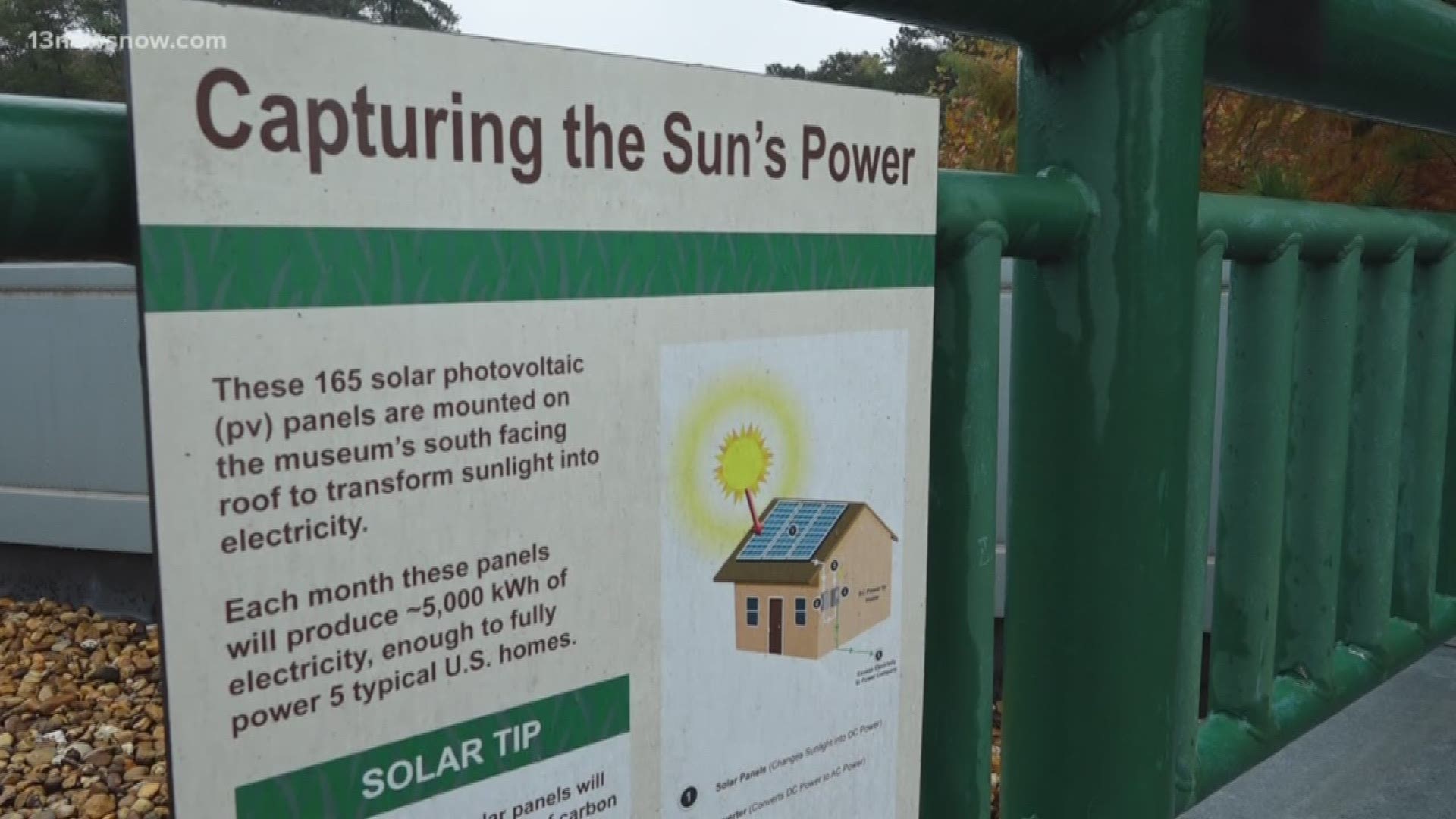NEWPORT NEWS, Va. — You may have been scolded for wasting food or wasting time.
But what about energy?
More specifically, a carbon footprint, which has nothing to do with our feet.
Fred Farris, the director of exhibits at the Virginia Living Museum in Newport News, breaks it down: "a carbon footprint is really how much carbon we use per person."
He adds, "and we in the United States, unfortunately, use a lot."
In fact, we're one of the top carbon-emitting countries in the world.
The museum shows multiple ways that we can decrease our personal emissions and in turn, our carbon footprint
"Behind us are some solar panels," says Farris from the roof of the museum's main building.
"In the future, the sun is going to be our answer because it's unlimited energy and can fuel all of our needs. As technology increases, we'll be able to capture it better."
The museum sits on a large area of land in the city, with exhibits beyond the main building, "in the distance you can see our "Living Green" demonstration and that's where we're going to see many ways you can reduce your footprint."
We took a trip to the living greenhouse, where the team purposely keeps all of the piping and wiring exposed to show the different ways to go green.
This may be surprising when you think of whether cars or homes are more energy inefficient, "actually buildings and homes use 30% more energy in this country than all the cars put together."
What you put in your walls can help save energy and keep your pockets fuller. You might be able to install a geothermal heat pump, which utilizes the temperature of the earth (geo = earth, thermal = heat).
For the more hands-on learners, try your hand at cranking to light both the inefficient and the more energy-friendly lightbulbs and feel the difference in the energy it takes to light them.
MORE
RELATED: SCIENCE BEHIND: Retrograde motion
RELATED: SCIENCE BEHIND: Meteor Showers
RELATED: SCIENCE BEHIND: Candy Cane Flavor

